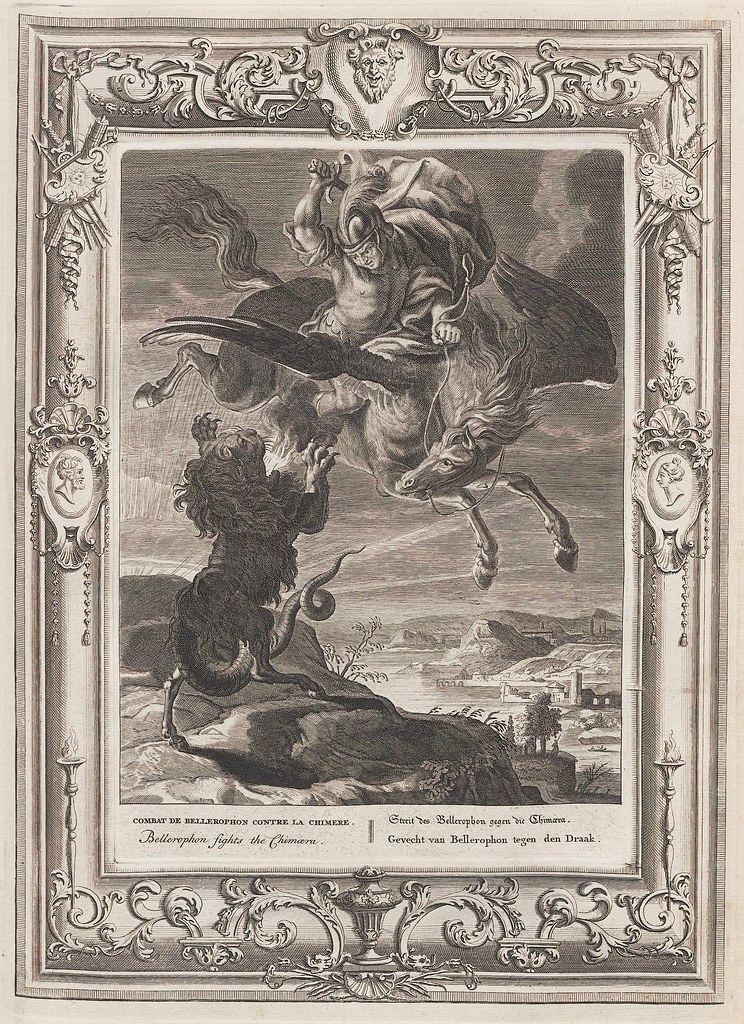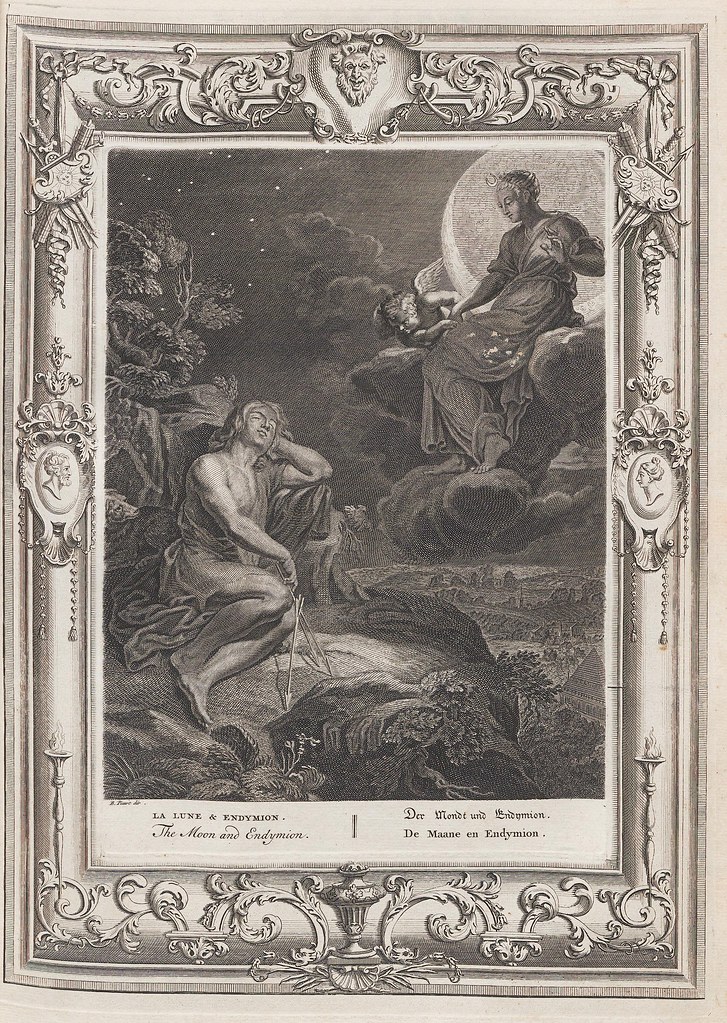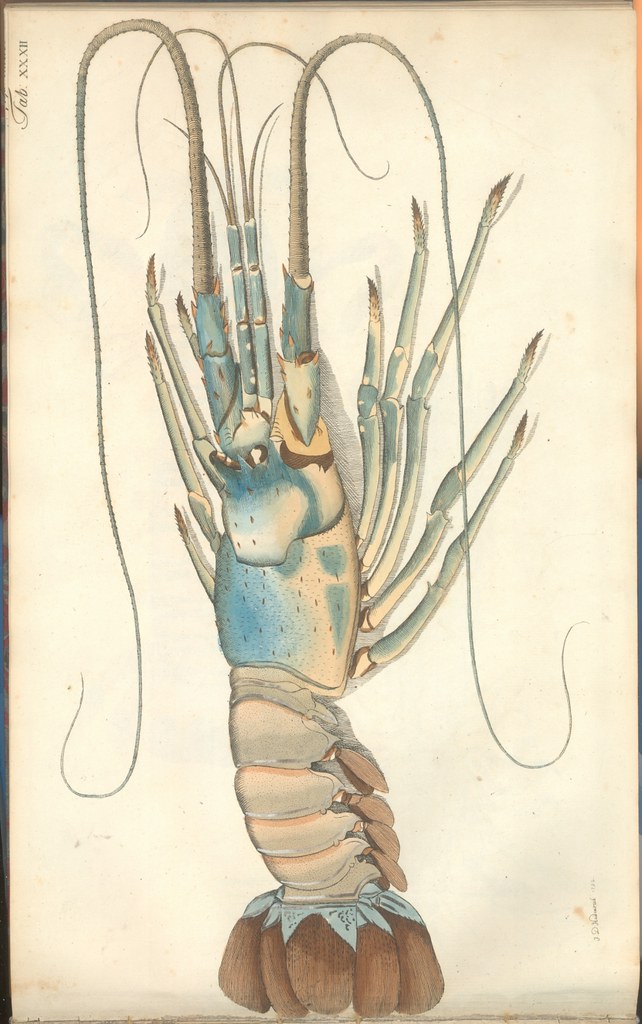Mythological Figures and Fables

The Chaos or the Origin of the World

Transformation of Cyguns into a Swan and Phaeton's Sisters into poplar trees

Bellerophon fights the Chimaera

Achelous in the shape of a Bull is vanquished by Hercules

Amphion builds the walls of Thebes by the Music of his Lyre

Arion preserved by a Dolphin

Atlas supports the Heavens on his shoulders

The Fall of Icarus

Glaucus changed into a Sea-God

The Moon and Endymion

The Dioscuri or Castor and Pollux the Guardians of Mariners

Ulysses and his companions avoid the charms of the Sirens

Hercules' Combat with the Hydra

Sisyphus's stone

Ixion's wheel

Hell
Bernard Picart (or Picard) (1673-1733) was a French book illustrator and one of the outstanding engravers from the first decades of the 18th century. His most famous work - see: Designer Religion - was an enormous compendium of the world's religions.
In 'Neueröffneter Musen-Tempel', a collection of mythological fables and stories (most notably from Ovid's 'Metamorphoses') is presented, accompanied by sixty copperplate engravings by Picart. The illustrations are superior in quality, even as they appeared in 1733 in the fading light of the Baroque tradition. The fabulous ornate border patterns lend the compositions something of a formal quality like framed paintings; indeed, Picart drew inspiration for a number of his engravings from mid-17th century works by the Rubens student, Abraham van Diepenbeeck. But the majority of the designs are by Picart himself.
Motives listed for Picart's illustration include: Alcyone, Alpheus, Andromeda, Apollo, Arethusa, Argonauts, Argus, Aristaeus, Artemis, Calais, Cassandra, Castor, Ceyx, Cycnus, Deucalion, Dioscuri, Echo, Enceladus, Endymion, Eos, Eurynome, Giants, Glaucus, Harpies, Heliades, Hera, Hermaphroditus, Hermes, House of Hypnos, Io, Iphis, Leander, Leucothoe, Lycaon, Memnon, Niobe, Niobids, Oeneus, Palladium, Pan, Perseus, Phaethon, Phineus, Polydeuces, Proteus, Pygmalion, Pyrrha, River Gods, Salmacis, Selene, Semele, Syrinx, Tantalus, The Flood, Tithonus, Trojan War, Troy, Underworld, Zetes, Zeus [source]
'The Temple of Muses' was published in France and Germany simultaneously in 1733 and includes captions in English, French, German and Dutch below each illustration. The images above are from a 1754 edition published in Amsterdam.
- 'Neueröffneter Musen-Tempel: Welcher das Allermerkwürdigste' (or, approximately/expanded: 'The Temple of the Muses contains mythological tales and fables of ancient authors, especially from Ovid's Metamorphoses, which are provided with comments and interpretations') was recently placed online at Ruprecht-Karls-Universität in Heidelberg. [click anything below 'Inhalt' and then 'Vorschau' for thumbnail pages] {$12.5K!}
- Previously: Designer Religion / Artcyclopedia entry.












